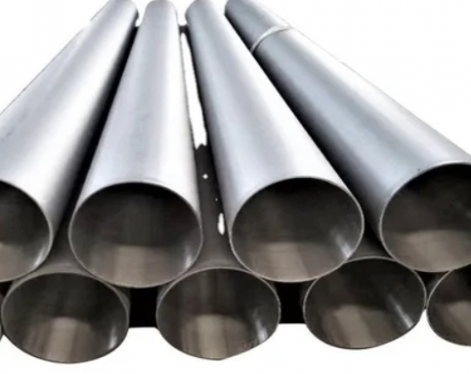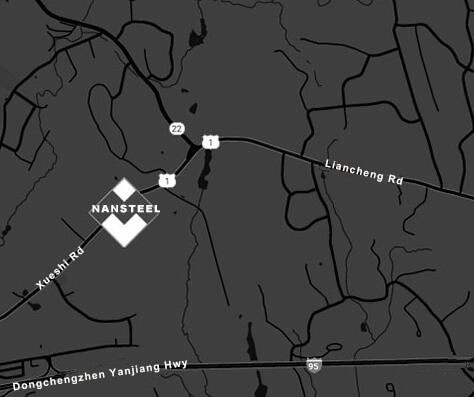The wall thickness of seamless pipes is one of the key parameters for their load-bearing capacity, strength and safety. Accurate wall thickness detection is essential to ensure the quality and application safety of steel pipes. In order to ensure that the wall thickness of seamless steel pipes meets the design requirements, various countries and regions have formulated a series of standards for wall thickness detection of steel pipes.
Nansteel Manufacturing Co., Ltd has carefully summarized the common wall thickness inspection standards, which cover measurement methods, tolerance ranges, inspection accuracy, etc. The following are some of the main standards and related information:
International and industry standards
ISO 1127—Dimensions, shapes, weights and tolerances for seamless steel tubes
Standard content: ISO 1127 mainly specifies the requirements for the outer diameter, wall thickness, length, tolerance, etc. of seamless steel pipes. It is applicable to various seamless steel pipes, including general-purpose steel pipes, boiler pipes, oil pipelines, etc.
Wall thickness tolerance: According to this standard, the tolerance of wall thickness should meet a certain range, for example, the wall thickness should not be less than 1/10 of the specified value and should not exceed the allowable deviation value.
ASTM A106 - Standard Specification for Seamless Carbon Steel Pipe
Standard Content: ASTM A106 is applicable to seamless carbon steel pipe, especially for applications in high temperature and high pressure environments.
Wall thickness tolerance: This standard specifies the allowable deviation in wall thickness of seamless steel pipes. For example, the deviation in wall thickness is usually plus or minus 3% to 5%, depending on the size and application of the pipe.
API 5L - Standard for Steel Pipes for Oil and Gas Pipelines
Standard content: API 5L is mainly used in the oil and gas industry and specifies the size and performance requirements of different grades of steel pipes.
Wall thickness tolerance: In API 5L, the tolerance of wall thickness is usually within ±12.5%, but the specific tolerance value needs to be adjusted according to the pipe specifications and application.

Chinese Standards
GB/T 8163——Seamless steel tube for general structure
Standard content: GB/T 8163 is a Chinese standard that specifies the size, weight, tolerance and other requirements of seamless steel pipes and is applicable to seamless steel pipes for general structural use.
Wall Thickness Tolerance: According to this standard, the tolerance for the wall thickness of steel pipes is ±12.5%, and there are special provisions for the tolerance range for small diameter, large diameter and thick wall pipes.
GB/T 5310——Seamless steel tubes for boilers
Standard content: GB/T 5310 is a standard specifically for seamless steel pipes for boilers. It is applicable to seamless steel pipes for boiler high-pressure pipelines and other high-temperature and high-pressure environments.
Wall thickness tolerance: This standard has strict requirements on wall thickness tolerance, usually within ±10%. In order to ensure the strength and durability of boiler pipes, this standard has stricter requirements on wall thickness testing.
GB/T 3091——Spiral welded steel pipe for low pressure fluid transportation
Standard content: GB/T 3091 is applicable to steel pipes used for low-pressure fluid transportation and is suitable for some low-pressure piping systems.
Wall thickness tolerance: The tolerance of steel pipe wall thickness is usually ±10%. The wall thickness requirements of this standard are relatively loose, but the stability and safety of fluid transportation must still be ensured.
Wall thickness detection method
1. Mechanical measurement method
Vernier caliper: Suitable for testing smaller steel pipes, simple and easy to use, but with low measurement accuracy.
Outside diameter caliper: Used to measure the outside diameter of the steel pipe, the wall thickness can be indirectly obtained by subtracting twice the wall thickness.
Inside diameter caliper: Directly measure the inside diameter of the steel pipe, and calculate the wall thickness by measuring the inside and outside diameters.
Number of measurement points: It is usually required to measure the wall thickness of each steel pipe at several locations, especially at both ends and in the middle of the straight pipe to ensure the uniformity of the pipe.
2. Nondestructive testing method
Ultrasonic thickness gauge (UT): Ultrasonic thickness measurement is the most commonly used non-destructive testing method, especially suitable for steel pipes with thicker walls. It can measure the wall thickness of steel pipes by the propagation speed of sound waves.
3. X-ray or gamma ray detectionX-rays or gamma rays can penetrate the steel pipe and generate images based on the thickness and density differences of the steel pipe, which are used to inspect the thickness and internal defects of the steel pipe. It is mostly used for the inspection of large-diameter thick-walled pipes. It can detect defects on the inner and outer walls of the pipes and obtain the distribution of wall thickness.
Read more: How to Accurately Control the Wall Thickness and Diameter of Seamless Pipes?
Nansteel Manufacturing Co., Ltd has carefully summarized the common wall thickness inspection standards, which cover measurement methods, tolerance ranges, inspection accuracy, etc. The following are some of the main standards and related information:
International and industry standards
ISO 1127—Dimensions, shapes, weights and tolerances for seamless steel tubes
Standard content: ISO 1127 mainly specifies the requirements for the outer diameter, wall thickness, length, tolerance, etc. of seamless steel pipes. It is applicable to various seamless steel pipes, including general-purpose steel pipes, boiler pipes, oil pipelines, etc.
Wall thickness tolerance: According to this standard, the tolerance of wall thickness should meet a certain range, for example, the wall thickness should not be less than 1/10 of the specified value and should not exceed the allowable deviation value.
ASTM A106 - Standard Specification for Seamless Carbon Steel Pipe
Standard Content: ASTM A106 is applicable to seamless carbon steel pipe, especially for applications in high temperature and high pressure environments.
Wall thickness tolerance: This standard specifies the allowable deviation in wall thickness of seamless steel pipes. For example, the deviation in wall thickness is usually plus or minus 3% to 5%, depending on the size and application of the pipe.
API 5L - Standard for Steel Pipes for Oil and Gas Pipelines
Standard content: API 5L is mainly used in the oil and gas industry and specifies the size and performance requirements of different grades of steel pipes.
Wall thickness tolerance: In API 5L, the tolerance of wall thickness is usually within ±12.5%, but the specific tolerance value needs to be adjusted according to the pipe specifications and application.

Chinese Standards
GB/T 8163——Seamless steel tube for general structure
Standard content: GB/T 8163 is a Chinese standard that specifies the size, weight, tolerance and other requirements of seamless steel pipes and is applicable to seamless steel pipes for general structural use.
Wall Thickness Tolerance: According to this standard, the tolerance for the wall thickness of steel pipes is ±12.5%, and there are special provisions for the tolerance range for small diameter, large diameter and thick wall pipes.
GB/T 5310——Seamless steel tubes for boilers
Standard content: GB/T 5310 is a standard specifically for seamless steel pipes for boilers. It is applicable to seamless steel pipes for boiler high-pressure pipelines and other high-temperature and high-pressure environments.
Wall thickness tolerance: This standard has strict requirements on wall thickness tolerance, usually within ±10%. In order to ensure the strength and durability of boiler pipes, this standard has stricter requirements on wall thickness testing.
GB/T 3091——Spiral welded steel pipe for low pressure fluid transportation
Standard content: GB/T 3091 is applicable to steel pipes used for low-pressure fluid transportation and is suitable for some low-pressure piping systems.
Wall thickness tolerance: The tolerance of steel pipe wall thickness is usually ±10%. The wall thickness requirements of this standard are relatively loose, but the stability and safety of fluid transportation must still be ensured.
Wall thickness detection method
1. Mechanical measurement method
Vernier caliper: Suitable for testing smaller steel pipes, simple and easy to use, but with low measurement accuracy.
Outside diameter caliper: Used to measure the outside diameter of the steel pipe, the wall thickness can be indirectly obtained by subtracting twice the wall thickness.
Inside diameter caliper: Directly measure the inside diameter of the steel pipe, and calculate the wall thickness by measuring the inside and outside diameters.
Number of measurement points: It is usually required to measure the wall thickness of each steel pipe at several locations, especially at both ends and in the middle of the straight pipe to ensure the uniformity of the pipe.
2. Nondestructive testing method
Ultrasonic thickness gauge (UT): Ultrasonic thickness measurement is the most commonly used non-destructive testing method, especially suitable for steel pipes with thicker walls. It can measure the wall thickness of steel pipes by the propagation speed of sound waves.
3. X-ray or gamma ray detectionX-rays or gamma rays can penetrate the steel pipe and generate images based on the thickness and density differences of the steel pipe, which are used to inspect the thickness and internal defects of the steel pipe. It is mostly used for the inspection of large-diameter thick-walled pipes. It can detect defects on the inner and outer walls of the pipes and obtain the distribution of wall thickness.
Read more: How to Accurately Control the Wall Thickness and Diameter of Seamless Pipes?









